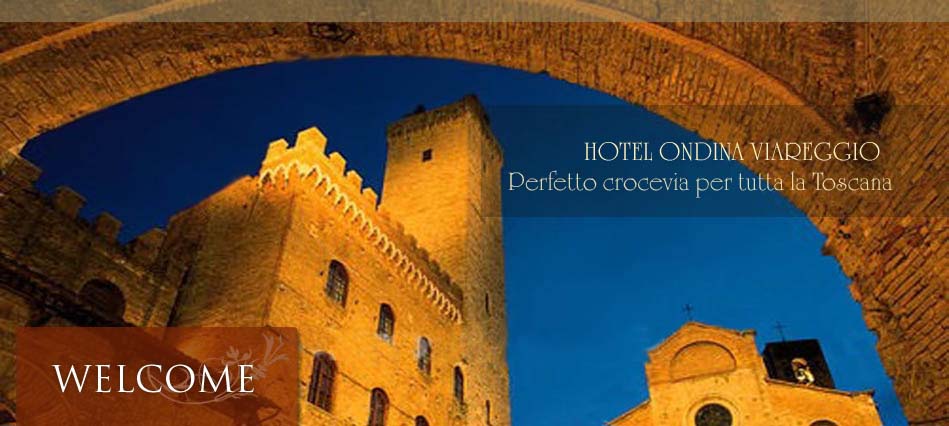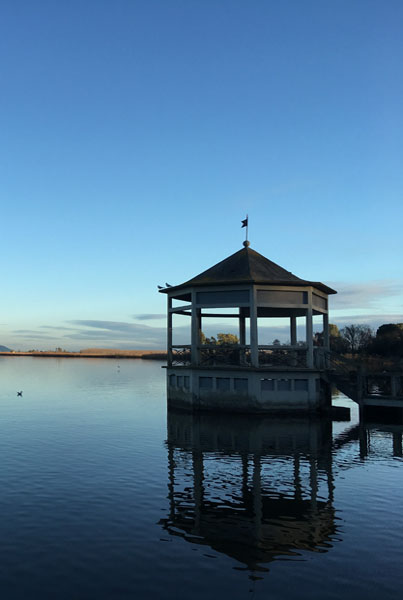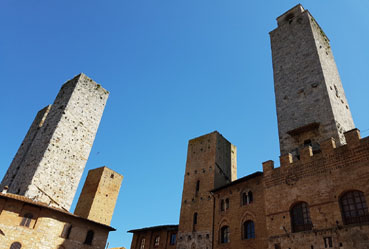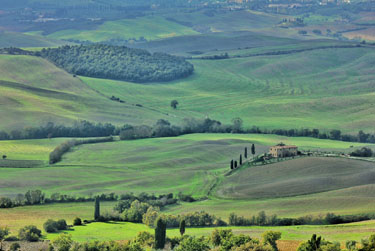Hotel in Viareggio, Tuscany, in the heart of Versilia. An Art Nouveau Hotel a stone's throw from the sea, where the friendliness and good taste come together. Family hotel in full operation, visited by thousands of tourists from all over Europe attracted to a place ideal for a relaxed holiday.

CITTA' VICINO A VIAREGGIO-CITIES NEAR TO VIAREGGIO
TORRE DEL LAGO PUCCINI
 Il suo nome ha origine dalla presenza di una torre che nel XV-XVI secolo sorgeva sul vicino lago di Massaciuccoli (chiamata prima Torre Guinigi e poi Torre del Turco). Al nome originario di Torre del Lago venne aggiunto, il 21 dicembre 1938, quello di Puccini, per rendere onore al grande compositore che qui visse e compose molte delle sue celeberrime opere liriche. La sua residenza, Villa Puccini, sorge sul belvedere del lago di Massaciuccoli ed ospita la tomba del compositore. La villa è visitabile ed è meta di turisti ed appassionati di lirica provenienti da tutto il mondo. Ogni anno, nel periodo estivo, in onore di Puccini si tiene un festival lirico, il Festival Puccini, nel quale vengono rappresentate, in un teatro all'aperto che si affaccia sul lago di Massaciuccoli, alcune opere del compositore da tempo presenti stabilmente nel repertorio lirico.
Il suo nome ha origine dalla presenza di una torre che nel XV-XVI secolo sorgeva sul vicino lago di Massaciuccoli (chiamata prima Torre Guinigi e poi Torre del Turco). Al nome originario di Torre del Lago venne aggiunto, il 21 dicembre 1938, quello di Puccini, per rendere onore al grande compositore che qui visse e compose molte delle sue celeberrime opere liriche. La sua residenza, Villa Puccini, sorge sul belvedere del lago di Massaciuccoli ed ospita la tomba del compositore. La villa è visitabile ed è meta di turisti ed appassionati di lirica provenienti da tutto il mondo. Ogni anno, nel periodo estivo, in onore di Puccini si tiene un festival lirico, il Festival Puccini, nel quale vengono rappresentate, in un teatro all'aperto che si affaccia sul lago di Massaciuccoli, alcune opere del compositore da tempo presenti stabilmente nel repertorio lirico.
ENGLISH VERSION
The Festival Puccini, an annual opera festival which attracts around 40,000 attendees, is held in its open-air theatre, a short distance from the Villa Mausoleum where opera composer Giacomo Puccini lived and worked. He is buried in a small chapel inside the Villa.
The area of the village on the sea (Marina di Torre del Lago) is well known for being an important gay and gay-friendly summer resort of national and international appeal.
PISA
 Pisa è un comune italiano di 87.696 abitanti della Toscana ed il capoluogo dell'omonima provincia.Secondo una leggenda sarebbe stata fondata da alcuni mitici profughi troiani provenienti dall'omonima città greca di Pisa, posta un tempo nella valle del fiume Alfeo, nel Peloponneso.
Pisa è un comune italiano di 87.696 abitanti della Toscana ed il capoluogo dell'omonima provincia.Secondo una leggenda sarebbe stata fondata da alcuni mitici profughi troiani provenienti dall'omonima città greca di Pisa, posta un tempo nella valle del fiume Alfeo, nel Peloponneso.Tra i monumenti più importanti della città vi è - nella celebre piazza del Duomo, dichiarata patrimonio dell'umanità - la Cattedrale costruita in marmo tra il 1063 e il 1118, in stile romanico pisano, con il portale in bronzo di san Ranieri di Bonanno Pisano e il pulpito di Giovanni Pisano. Nella piazza svetta la caratteristica Torre pendente, campanile del XII secolo, alta 56 metri, che acquisì la sua caratteristica inclinazione dieci anni dopo l'inizio della sua costruzione, oggi uno dei monumenti italiani più conosciuti al mondo. Da notare la presenza di almeno tre torri inclinate: una, la più nota, appunto in piazza del Duomo; la seconda costituita dal campanile della chiesa di San Nicola, all'estremità opposta di via Santa Maria, vicino al Lungarno; la terza, a metà strada del viale delle Piagge (lungofiume situato nella parte est della città), è il campanile della chiesa di San Michele degli Scalzi (in questo caso anche la chiesa è pendente).
Pisa ospita il più rilevante aeroporto della Regione, il "Galileo Galilei" che vanta anche collegamenti intercontinentali diretti, ed è sede di ben tre tra le più importanti istituzioni universitarie d'Italia, l'Università di Pisa, la Scuola Normale Superiore e la Scuola Superiore Sant'Anna, e di numerosi istituti di ricerca.
ENGLISH VERSION
Ancient Roman authors referred to Pisa as an old city. Servius wrote that the Teuti, or Pelopes, the king of the Pisei, founded the town thirteen centuries before the start of the common era. Strabo referred Pisa's origins to the mythical Nestor, king of Pylos, after the fall of Troy. Virgil in his Aeneid states that Pisa was already a great and developed centre by the times described; the foundation of the city in the 'Etruscan lands' has been credited to settlers from the Alpheus coast.While the Leaning Tower is the most famous image of the city, it is one of many works of art and architecture in the city's Piazza del Duomo, also known, since XX century, as Piazza dei Miracoli (Square of Miracles), to the north of the old town center. The Piazza del Duomo also houses the Duomo (the Cathedral), the Baptistry and the Camposanto Monumentale (the monumental cemetery).
SAN GIMIGNANO
 San Gimignano è soprattutto famosa per le circa sedici torri medievali che ancora svettano sul suo panorama, che le hanno valso il soprannome di Manhattan del medioevo. Delle 72 tra torri e case-torri, esistenti nel periodo d'oro del Comune, ne restavano venticinque nel 1580 ed oggi ne restano circa quattordici ufficiali, con altre scapitozzate intravedibili nel tessuto urbano. La più antica è la Torre del Podestà, detta la Rognosa, che è alta 51 metri, mentre la più alta è la Torre Grossa, di 54 metri. Un regolamento del 1255 vietò ai privati di erigere torri più alte dellaRognosa, anche se le due famiglie più importanti, Ardinghelli e Salvucci, non lo rispettarono.Nell'interezione delle due direttrici principali, nel punto altimetricamente più elevato, si trovano le piazze cittadine: piazza del Duomo e piazza della Cisterna. Piazza Pecori è un pittoresco slargo sul fianco della collegiata che assomiglia più a un cortile interno privato.Affacciate sulle piazze e sulle vie principali si trovano le torri e case-torri dell'antica aristocrazia mercantile e finanziaria, architetture eccezionali per numero e per stato di conservazione.
San Gimignano è soprattutto famosa per le circa sedici torri medievali che ancora svettano sul suo panorama, che le hanno valso il soprannome di Manhattan del medioevo. Delle 72 tra torri e case-torri, esistenti nel periodo d'oro del Comune, ne restavano venticinque nel 1580 ed oggi ne restano circa quattordici ufficiali, con altre scapitozzate intravedibili nel tessuto urbano. La più antica è la Torre del Podestà, detta la Rognosa, che è alta 51 metri, mentre la più alta è la Torre Grossa, di 54 metri. Un regolamento del 1255 vietò ai privati di erigere torri più alte dellaRognosa, anche se le due famiglie più importanti, Ardinghelli e Salvucci, non lo rispettarono.Nell'interezione delle due direttrici principali, nel punto altimetricamente più elevato, si trovano le piazze cittadine: piazza del Duomo e piazza della Cisterna. Piazza Pecori è un pittoresco slargo sul fianco della collegiata che assomiglia più a un cortile interno privato.Affacciate sulle piazze e sulle vie principali si trovano le torri e case-torri dell'antica aristocrazia mercantile e finanziaria, architetture eccezionali per numero e per stato di conservazione. ENGLISH VERSION
San Gimignano was founded as a small village in the 3rd century BC by the Etruscans. Historical records begin in the 10th century, when it adopted the name of the bishop Saint Geminianus, who had defended it from Attila's Huns.
In the Middle Ages and Renaissance era, it was a stopping point for Catholic pilgrims on their way to Rome and the Vatican, as it sits on the medieval Via Francigena. The city's development also was improved by the trade of agricultural products from the fertile neighbouring hills.
SIENA
 Siena è un comune di 54.188 abitanti della Toscana centrale, capoluogo dell'omonima provincia.
Siena è un comune di 54.188 abitanti della Toscana centrale, capoluogo dell'omonima provincia.La città è universalmente conosciuta per il suo patrimonio artistico e per la sostanziale unità stilistica del suo arredo urbano medievale, nonché per il suo famoso palio.È stata dichiarata dall'UNESCO patrimonio dell'umanità.Siena fu fondata come colonia romana al tempo dell'Imperatore Augusto e prese il nome di Saena Iulia.All'interno del centro storico senese sono stati ritrovati dei siti di epoca etrusca, che possono far pensare alla fondazione della città da parte degli etruschi. Oltre che per la sua bellezza architettonica e per le chiese tra cui spicca la Cattedrale, Siena è molto famosa anche per il suoPalio. Il 2 luglio e il 16 agosto a Siena, in Piazza del Campo, si svolge il tradizionale Palio, una corsa di cavalli montati a pelo (senza sella) tra le diverse contrade di Siena che monopolizza l'attenzione della città per diversi giorni; questo è dato dal fatto che il palio non è esclusivamente una manifestazione storica o la rivisitazione di un'antica giostra medievale, ma è l'espressione dell'antichissima e radicata tradizione senese. Il palio è ben lungi dall'essere una manifestazione che si possa gabellare in "pochi giorni", ma è il frutto di un'accurata e maniacale organizzazione da parte delle contrade cittadine, che conducono un'intensa vita sociale ed associativa durante tutto l'arco dell'anno. ci sono dieci contrade sette delle quali vengono sorteggiate 2 volte all'anno in occasione del palio sono: Aquila, Bruco, Chiocciola, Civetta, Drago, Giraffa, Istrice, Leocorno, Lupa, Nicchio, Oca, Onda, Pantera, Selva, Tartuca, Torre, Valdimontone.Il Palio richiama anche molti turisti ed è seguito in diretta da molte televisioni.
ENGLISH VERSION
FIRENZE
ENGLISH VERSION
The historic centre of Florence attracts millions of tourists each year and was declared a World Heritage Site by UNESCO in 1982. Florence is widely regarded as one of the most beautiful cities in the world, and its artistic, historic and cultural heritage and impact in the world remains vast up to this day. The city has also a major European impact in music, architecture, education, cuisine, fashion, philosophy, science and religion. The historic centre of Florence contains numerous elegant squares (piazzas), Renaissance palaces (palazzi), academies, parks, gardens, churches, monasteries, museums, art galleries and ateliers. The city has also been nominated, according to a 2007 study, as the most desirable destination for tourists in the world.The city boasts a wide range of collections of art, especially those held in the Pitti Palace and the Uffizi, (which receives about 1.6 million tourists a year).Florence is arguably the last preserved Renaissance city in the world[10] and is regarded by many as the art capital of Italy. It has been the birthplace or chosen home of many notable historical figures, such as Dante, Boccaccio, Leonardo da Vinci, Botticelli, Niccolò Machiavelli, Brunelleschi, Michelangelo, Donatello, Galileo Galilei. Florence is known as the “cradle of the Renaissance” (la culla del Rinascimento) for its monuments, churches and buildings. The best-known site and crowning architectural jewel of Florence is the domed cathedral of the city, Santa Maria del Fiore, known as The Duomo. The magnificent dome was built by Filippo Brunelleschi. The nearby Campanile (partly designed by Giotto) and the Baptistery buildings are also highlights. Both the dome itself and the campanile are open to tourists and offer excellent views; The dome, 600 years after its completion, is still the largest dome built in brick and mortar in the world.[16]
In 1982, the historic centre of Florence (Italian: centro storico di Firenze) was declared a World Heritage Site by the UNESCO for the importance of its cultural heritages. The centre of the city is contained in medieval walls that were built in the fourteenth century to defend the city after it became famous and important for its economic growth.
At the heart of the city, in Piazza della Signoria, is Bartolomeo Ammanati's Fountain of Neptune (1563–1565), which is a masterpiece of marble sculpture at the terminus of a still- functioning Roman aqueduct.
The River Arno, which cuts through the old part of the city, is as much a character in Florentine history as many of the people who lived there. Historically, the locals have had a love-hate relationship with the Arno — which alternated between nourishing the city with commerce, and destroying it by flood.
One of the bridges in particular stands out as being unique — The Ponte Vecchio (Old Bridge), whose most striking feature is the multitude of shops built upon its edges, held up by stilts. The bridge also carries Vasari's elevated corridor linking the Uffizi to the Medici residence (Palazzo Pitti). Although the original bridge was constructed by the Etruscans, the current bridge was rebuilt in the 14th century. It is the only bridge in the city to have survived World War II intact.
LUCCA
 Lucca è una delle principali città d'arte d'Italia, celebre anche al di fuori dei confini nazionali soprattutto per la sua intatta cinta muraria del XV-XVII secolo, che descrive un perimetro di 4.223 m circa intorno al nucleo storico della città e ne fa uno dei 4 capoluoghi di provincia Italiani ad avere una cerchia muraria intatta, assieme a Ferrara, Grosseto, Bergamo; la stessa cerchia, trasformata già a partire dalla seconda metà dell'Ottocento in piacevole passeggiata pedonale, risulta a tutt'oggi come una delle meglio conservate in Europa, in quanto mai utilizzata nei secoli passati a scopo difensivo.
Lucca è una delle principali città d'arte d'Italia, celebre anche al di fuori dei confini nazionali soprattutto per la sua intatta cinta muraria del XV-XVII secolo, che descrive un perimetro di 4.223 m circa intorno al nucleo storico della città e ne fa uno dei 4 capoluoghi di provincia Italiani ad avere una cerchia muraria intatta, assieme a Ferrara, Grosseto, Bergamo; la stessa cerchia, trasformata già a partire dalla seconda metà dell'Ottocento in piacevole passeggiata pedonale, risulta a tutt'oggi come una delle meglio conservate in Europa, in quanto mai utilizzata nei secoli passati a scopo difensivo.Di conseguenza anche il centro storico monumentale della città è rimasto pres-soché intatto nel suo aspetto originario, potendo dunque annoverare svariate architetture di pregio, come le numerosis-sime chiese medievali di notevole ricchezza architettonica (Lucca è stata addirittura soprannominata la "città dalle 100 chiese", proprio per la presenza di numerose chiese nel suo nucleo storico, consacrate e non, presenti in passato ed ora in città), torri e campanili, e monumentali palazzi rinascimentali di pregevole linearità stilistica.
La città vanta anche suggestivi spazi urbani: il più celebre è sicuramente quello di piazza dell'Anfiteatro, nato sulle rovine dell'antico anfiteatro romano ad opera dell'architetto Lorenzo Nottolini ed unico nel suo genere architettonico.
Arteria principale della città storica è la stretta e medievale via Fillungo, che riunisce i maggiori esercizi commerciali della città.
ENGLISH VERSION
The Academy of Sciences (1584) is the most famous of several academies and libraries.
The Casa di Puccini is open to the public. At nearby Torre del Lago there is a Puccini opera festival every year in July/August. Puccini had a house there.
There are many richly built medieval basilica-form churches in Lucca with rich arcaded facades and campaniles, a few as old as the 8th century.
CAMPAGNA TOSCANA
 La campagna toscana è nota nel mondo per i caratteristici insediamenti rurali sparsi, legati a poderi mezzadrili, che in passato assicuravano lavoro per tutto l'anno agricolo a tutti coloro che vi abitavano.
La campagna toscana è nota nel mondo per i caratteristici insediamenti rurali sparsi, legati a poderi mezzadrili, che in passato assicuravano lavoro per tutto l'anno agricolo a tutti coloro che vi abitavano.In epoca medievale, alcuni agglomerati rurali furono i precursori di piccoli borghi, che si sono ben conservati fino ai giorni nostri, epoca in cui hanno conosciuto un'ulteriore valorizzazione. Tali esempi si ritrovano principalmente nelle aree pianeggianti e collinari interne della Toscana centrosettentrionale.
Tra il periodo rinascimentale e quello barocco, sorsero numerose fattorie fortificate, dette grange, soprattutto nelle zone centromeridionali della regione, presso le quali veniva costruita l'immancabile cappella padronale. Dal Settecento in poi, la bonifica della Maremma e, più in generale, delle pianure costiere diede un ulteriore impluso allo sviluppo di case rurali, soprattutto in prossimità delle aree costiere centro-meridionali, ove vi era l'esigenza di rendere coltivabili le nuove terre strappate alle preesistenti aree paludose: anche in questo caso venivano spesso costruite piccole cappelle presso le fattorie e le case coloniche, dove i sacerdoti delle parrocchie di competenza si recavano periodicamente a celebrare le funzioni religiose.
Le case coloniche, molto spesso isolate, costituiscono pertanto uno degli elementi che contraddistinguono il paesaggio toscano, come ad esempio quello della val d'Orcia, reso dolce e suggestivo dai famosi filari di cipresso.
La casa rurale presenta generalmente costruzioni in muratura, molto spesso su due piani, con il tetto rivestito dai tipici laterizi toscani. In base alle funzioni svolte, le case rurali possono presentarsi con un unico fabbricato che in passato comprendeva sia l'abitazione al piano superiore che il rustico al pian terreno (tipologia residenziale), oppure con un edificio principale adibito ad abitazione e una o più strutture distaccate adibite a rustici ed annessi vari (tipologia aziendale).
Ogni zona della Toscana si caratterizza per le proprie varianti tipiche, come l'aretina, senese, fiorentina, lucchese, pistoiese, pisana e maremmana. Le diverse varianti residenziali presentano comunque il fabbricato generalmente di pianta rettangolare, talvolta con scala esterna che conduceva all'abitazione principale del piano superiore.
ENGLISH VERSION
Wine is also a famous and very common produce of Tuscany. Chianti is arguably the most well-known internationally. As a matter of fact, due to several British tourists coming to the area where Chianti wine is produced, this specific area has been nicknamed




